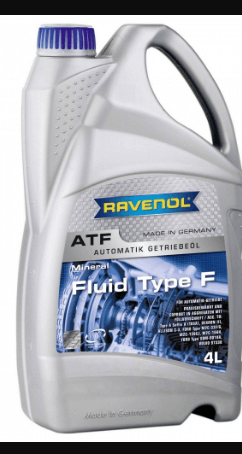ATF (Automatic Transmission Fluid) oil is essential for more than just transmissions. It’s also commonly used in power steering systems to ensure smooth operation.
Knowing the right type of ATF oil for your vehicle’s power steering can significantly affect performance and longevity.
In this post, we’ll explore why ATF oil is used in power steering systems, its benefits, and how to maintain your vehicle’s power steering system effectively.
ATF Oil Suitable for Power Steering
- Dexron
- Mercon
- Type F
- ATF+4
1. Dexron

Dexron is a trademarked series of ATF oils originally developed by General Motors (GM). Over the years, the Dexron brand has seen several iterations, with each version improving upon the last. Dexron II and Dexron III are among the most well-known,
with Dexron III being widely used in a variety of GM vehicles. Dexron VI, the latest version, is fully synthetic, offering superior oxidation stability, reduced viscosity for better fuel efficiency, and improved low-temperature performance.
This makes it highly versatile, not only enhancing the operation of automatic transmissions but also providing excellent lubrication and hydraulic function in power steering systems. Dexron’s advanced formulation ensures it maintains its properties over extended periods, reducing the frequency of fluid changes and protecting against wear, corrosion, and foaming.
2. Mercon

Mercon is Ford’s equivalent to Dexron, specifically engineered for use in Ford vehicles. Like Dexron, Mercon has gone through multiple versions, with Mercon V being the most common in modern Ford vehicles.
Mercon V is a synthetic blend that offers enhanced thermal stability and anti-wear properties, making it suitable for both automatic transmissions and power steering systems that demand high-performance fluid.
One of the key advantages of Mercon is its ability to operate effectively under high-temperature conditions, which is critical for vehicles that are subject to heavy loads or extreme driving conditions. This makes Mercon an ideal choice for ensuring smooth steering and reliable operation in a wide range of Ford vehicles.
Read Is O’Reilly Brand Oil Good(Here’s What You Need to Know)
3. Type F

Type F ATF is unique in its formulation, specifically designed for older Ford vehicles manufactured before 1977. Unlike Dexron and Mercon, Type F fluid is non-friction modified, meaning it lacks the friction modifiers that make Dexron and Mercon more slippery.
This resulted in a more aggressive grip on the internal clutches, which was necessary for the older transmission designs. In power steering systems, Type F fluid is known for providing a firmer steering feel, which some drivers of vintage cars prefer.
Info Box:it's important to note that using Type F in systems designed for Dexron or Mercon can lead to increased wear and potential damage due to the different friction characteristics. Therefore, Type F should only be used in vehicles specifically requiring it.4. ATF+4

ATF+4 is a synthetic ATF developed by Chrysler, tailored to meet the specific needs of Chrysler, Dodge, and Jeep vehicles. It was introduced to replace the earlier ATF+3 and provide enhanced performance characteristics, including improved friction durability and better temperature stability.
ATF+4 offers superior resistance to oxidation and thermal breakdown, ensuring consistent performance even under severe conditions.
This fluid is designed to last longer than previous versions, reducing the need for frequent fluid changes. ATF+4 provides excellent lubricity in power steering systems, which helps minimize wear on components and ensures smooth, responsive steering.
Chrysler vehicles equipped with power steering systems that require ATF+4 benefit from this fluid’s ability to maintain viscosity and protect against foaming, which can lead to steering inefficiency.
Read Royal Purple oil vs Mobil 1(Which Oil Outperforms the Other)
Why ATF Oil is Used in Power Steering
Power steering systems require a fluid that can withstand high pressure while maintaining its lubricating properties. ATF oil fits this requirement perfectly. It not only helps in smooth steering but also reduces wear and tear on the steering components. The hydraulic nature of ATF allows for easier maneuvering of the steering wheel, providing a better driving experience.
Benefits of Using ATF Oil in Power Steering
- Improved Steering Response: ATF oil ensures that the steering wheel moves smoothly, reducing effort during maneuvers.
- Reduced Wear and Tear: The lubricating properties of ATF oil protect the power steering pump, seals, and other components from excessive wear.
- Extended Lifespan of Components: With proper lubrication, the steering system’s components last longer, reducing the need for frequent replacements.
How to Check and Maintain ATF Oil in Power Steering
- Locate the Power Steering Reservoir: Usually found near the engine, the reservoir is where you’ll check the fluid level.
- Check the Fluid Level: Open the reservoir and use the dipstick to check the ATF level. Ensure it’s within the recommended range.
- Inspect the Fluid Condition: The ATF should be a bright red color. If it’s dark or smells burnt, it’s time to replace it.
- Top Up or Replace: If the fluid level is low, top it up with the recommended ATF oil. If the fluid is dirty, consider a complete flush and replacement.
Read How to Clean Funnel After Oil Change(Don’t Make These Mistakes)
Signs of Low ATF Oil in Power Steering
- Stiff Steering Wheel: Difficulty in turning the steering wheel is a common sign of low ATF oil levels.
- Noisy Steering: Squealing or whining noises when turning the wheel indicate that the fluid level is low or the fluid is contaminated.
- Leaking Fluid: ATF leaks can occur if the seals in the power steering system are worn out. Look for red or brown stains under the vehicle.
- Burnt Smell: A burnt smell from the engine bay could indicate that the ATF oil is overheating and needs to be replaced.
How to Change ATF Oil in Power Steering
- Gather Supplies: You’ll need the recommended ATF oil, a funnel, a drain pan, and possibly a wrench or pliers.
- Drain the Old Fluid: Locate the power steering pump or the return hose. Loosen it to drain the old fluid into the pan.
- Flush the System: To remove all the old fluid, you may need to turn the steering wheel back and forth while draining.
- Refill with New ATF Oil: Once drained, reconnect everything and refill the system with new ATF oil. Make sure to fill it to the correct level.
- Bleed the System: After refilling, turn the steering wheel several times to remove air bubbles. This ensures the system is fully lubricated.
Difference Between Power Steering Fluid and ATF Oil
- Composition: Power steering fluid is specifically designed for steering systems and typically doesn’t have the detergents and additives found in ATF oil.
- Compatibility: Some vehicles are designed to use power steering fluid only, and using ATF oil can cause damage. Always consult your vehicle’s manual before switching fluids.
- Performance: ATF oil offers more cleaning power and may provide better lubrication in older or high-mileage vehicles.
When to Replace ATF Oil in Power Steering
- Manufacturer Recommendations: Check your vehicle’s manual for specific intervals. Typically, ATF oil should be replaced every 30,000 to 50,000 miles.
- Signs of Wear: If you notice stiff steering, strange noises, or dark fluid, it’s time to replace the ATF oil, regardless of mileage.
- Frequent Stop-and-Go Driving: If you drive in conditions that require constant steering adjustments, consider replacing the ATF oil more frequently.
Potential Issues from Using Incorrect ATF Oil
- Increased Wear: Incorrect fluid may not provide adequate lubrication, leading to premature wear of the power steering pump and other components.
- Overheating: Some ATF oils aren’t designed to withstand the heat generated in certain power steering systems, leading to overheating and fluid breakdown.
- Seal Damage: The wrong ATF oil can cause the seals in the power steering system to swell or deteriorate, leading to leaks.
How to Choose the Right ATF Oil for Your Vehicle
Choosing the correct ATF oil involves several factors:
- Consult the Manual: Your vehicle’s manual will specify the type of ATF oil required.
- Consider the Climate: In colder climates, a thinner ATF may be better suited, while in hotter climates, a more viscous fluid might be necessary.
- Vehicle Age: Older vehicles may benefit from higher viscosity ATF oils that provide better protection against wear.
How to Extend the Life of Power Steering System with ATF Oil
Extending the life of your power steering system is possible with regular maintenance:
- Regular Fluid Checks: Monitor the ATF oil level and condition regularly to ensure it’s always at the optimal level.
- Use High-Quality ATF Oil: Opt for premium ATF oil that offers better protection and longer-lasting performance.
- Avoid Overloading the Steering System: Don’t overstrain the steering system by turning the wheel all the way to the stop frequently.
What Happens If You Don’t Replace ATF Oil in Power Steering?
Neglecting to replace ATF oil can lead to several issues:
- Increased Wear: Old or dirty fluid can cause increased friction, leading to wear on the power steering pump and other components.
- System Failure: In extreme cases, failing to replace ATF oil can lead to total power steering failure, making the vehicle difficult to control.
- Costly Repairs: Replacing a power steering pump or fixing leaks can be expensive, often costing several hundred dollars.
FAQs
What is ATF oil used for?
ATF oil is primarily used in automatic transmissions and power steering systems. It serves as a lubricant and hydraulic fluid, ensuring smooth operation.
Can you mix power steering fluid with ATF oil?
Mixing the two isn’t recommended. While some systems can use either, it’s best to stick to the fluid specified by the vehicle manufacturer.
How often should ATF oil be replaced in power steering?
ATF oil should typically be replaced every 30,000 to 50,000 miles. Check your vehicle’s manual for specific recommendations.
Is it okay to use ATF oil in a manual transmission?
Some manual transmissions require ATF oil, but others do not. Always check your vehicle’s manual before using ATF oil in a manual transmission.
Can I use Dexron in place of Mercon?
Dexron and Mercon have different formulations. It’s important to use the fluid specified for your vehicle to avoid potential damage.
What happens if ATF oil is low in the power steering system?
Low ATF oil can lead to stiff steering, increased noise, and potential damage to the power steering pump.




